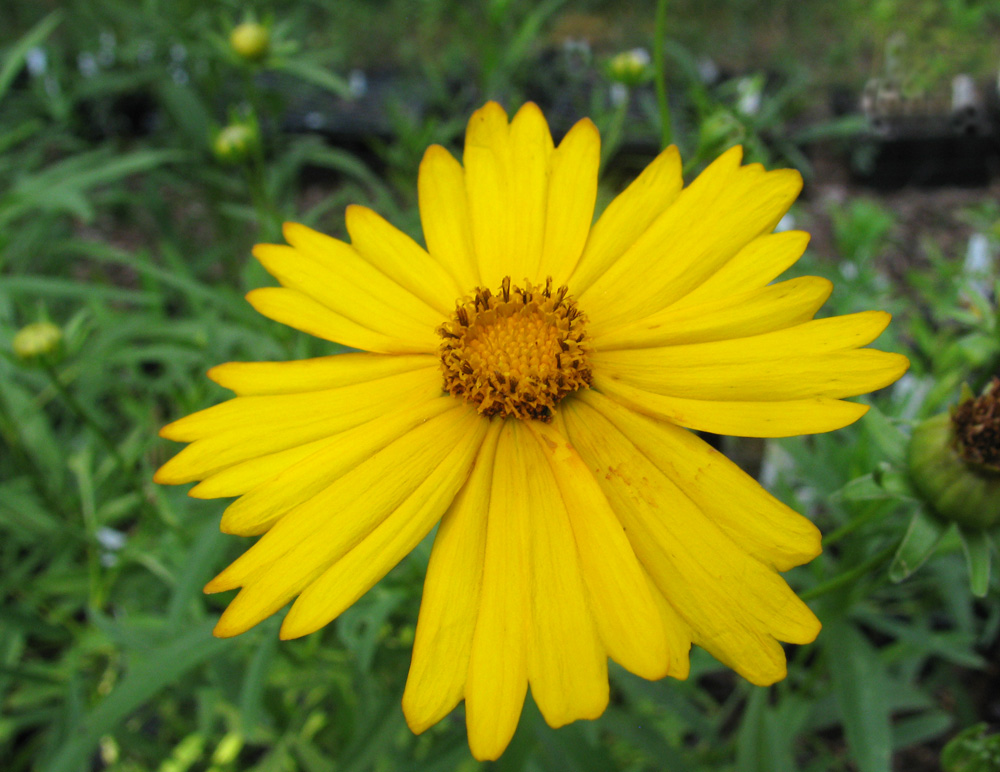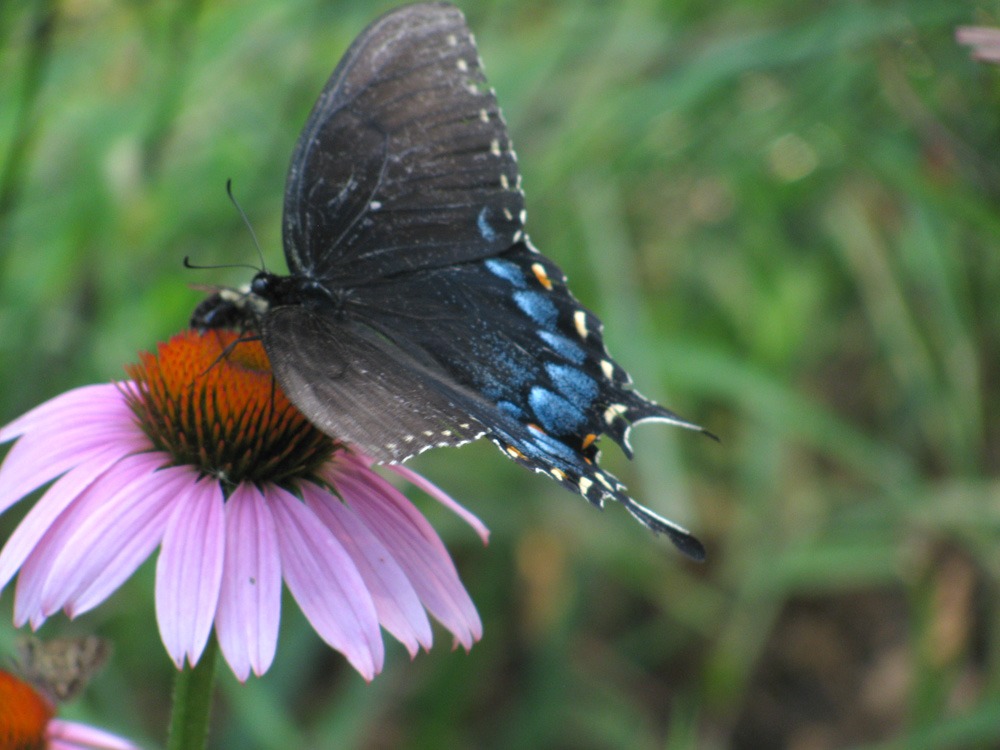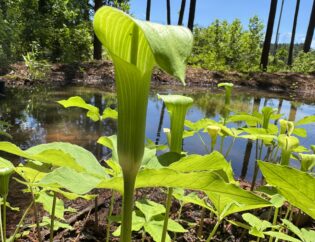It’s HOT. We’ve had some good thundershowers recently, so it’s not a drought at least. Next week’s forecast of mid-90’s highs every day with little chance of rain means you should probably water your shrubs a bit this weekend. Our potted plants at the farm are being watered twice daily.
The spring bloomers are looking pretty ragged at this point as they seem to just shrivel under the weight of the hot air, but the summer and fall bloomers have put on some robust growth and beautiful flowers. I hope you have a minute, there’s lots of pretty pictures: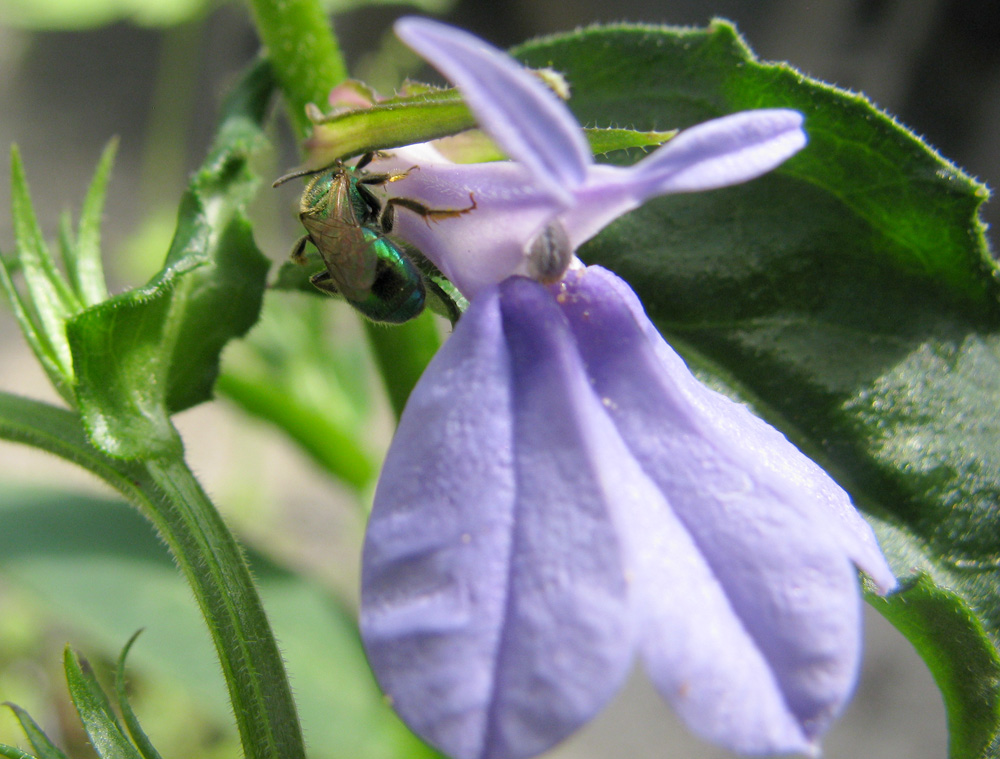
First, a Downy Lobelia (Lobelia puberula) bloom in the greenhouse with an Agapostemon bee on it. There are lots of species in that genus, but they are all commonly known as ‘sweat bees.’ One of our many native ground-nesting bees, there have been several in the greenhouse for the past week or two. There is a lot of open, parched ground around the greenhouse’s compacted clay foundation and that just happens to be just what ground nesting bees look for in real estate.
Out in the nursery another Lobelia is also blooming: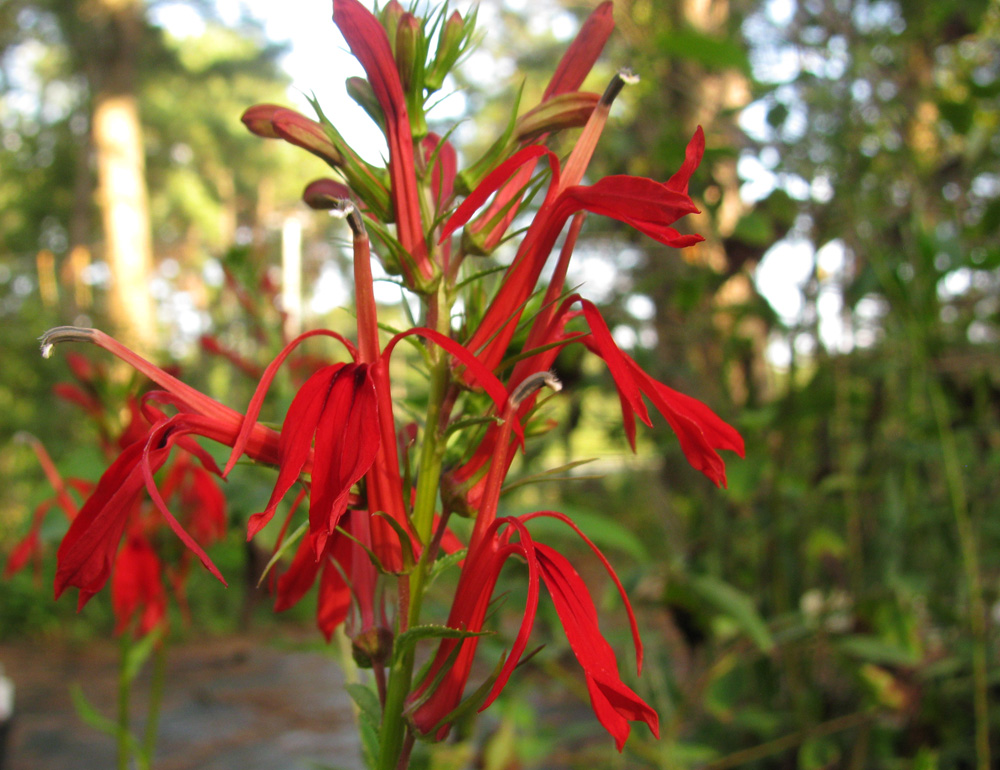
Cardinal Flower (Lobelia cardinalis) is gorgeous as usual. 
A Phlox species that we think might be Phlox maculatum?
Large Flowered Coreopsis (Coreopsis grandiflora) blooming in pots! This plant looks like a marigold on steroids in the ground, but always did poorly in pots until I stuck them on the highest, driest, sunniest spot in the nursery.
Family resemblance of the day: Joe Pye and Boneset. These both used to be in the same genus (Eupatorium) until recently, but are both still in the family Asteraceae (subfamily Asteroideae, supertribe Helianthodae, tribe Eupatorieae……there are A LOT of Asters). Joe Pye Weed (Eutrochium fistulosum) on the left has pinkish flowers, and Boneset (Eupatorium perfoliatum) on the right has white blooms.
 Spotted Horse Mint (Monarda punctata) isn’t even technically blooming yet and is already eye-catching. The flowers are those little green parts clustered around the stem, the seemingly painted-on colors are modified leaf-like bracts.
Spotted Horse Mint (Monarda punctata) isn’t even technically blooming yet and is already eye-catching. The flowers are those little green parts clustered around the stem, the seemingly painted-on colors are modified leaf-like bracts.
All of the previous pictures are of flowers formed by plants in pots. If you were to install them in your yard they would be twice as big (at least), more floriferous, and you’d get to walk past them every day.
 Out in the propagation beds you can see what I mean. Black Eyed Susan (Rudbeckia fulgida) with hundreds of blooms as opposed to the ones in pots with only a dozen or so.
Out in the propagation beds you can see what I mean. Black Eyed Susan (Rudbeckia fulgida) with hundreds of blooms as opposed to the ones in pots with only a dozen or so.
Blue Skullcap (Scutellaria incana) is also loving the heat.
Passion Vine (Passiflora incarnata) does have some of the most unique blooms you’ll find this far away from the Equator, and it makes little edible fruits commonly known as Maypops. You can see one forming on the left.
Finally, Purple Coneflower (Echinacea purpurea). It really is a workhorse of a pollinator plant. I tried to focus in on the tiny individual flowers in between the spikes. Those little dark tubes with the yellow star-like stamens sticking out are the fertile flowers that the bees and butterflies want. 
It’s like a giant counter full of delicious smoothies, and you have a built in straw. Also, it’s guarded by massive spikes to keep those pesky mammals from just eating the whole thing. Echino- is the Latin for “spiny; prickly.” Sea Urchins and Star Fish are “Echinoderms.” 
Despite being larger than the whole flower head this Eastern Tiger Swallowtail (as well as most other butterflies) has a very long, thin, retractable, tube-like tongue which it methodically moves from each tiny flower to the next to extract the nectar.
Trying to get these two guys in the same frame took a minute. They don’t like sudden movements.
I think that this is a female Tiger Swallowtail, so we should have plenty of caterpillars soon!
